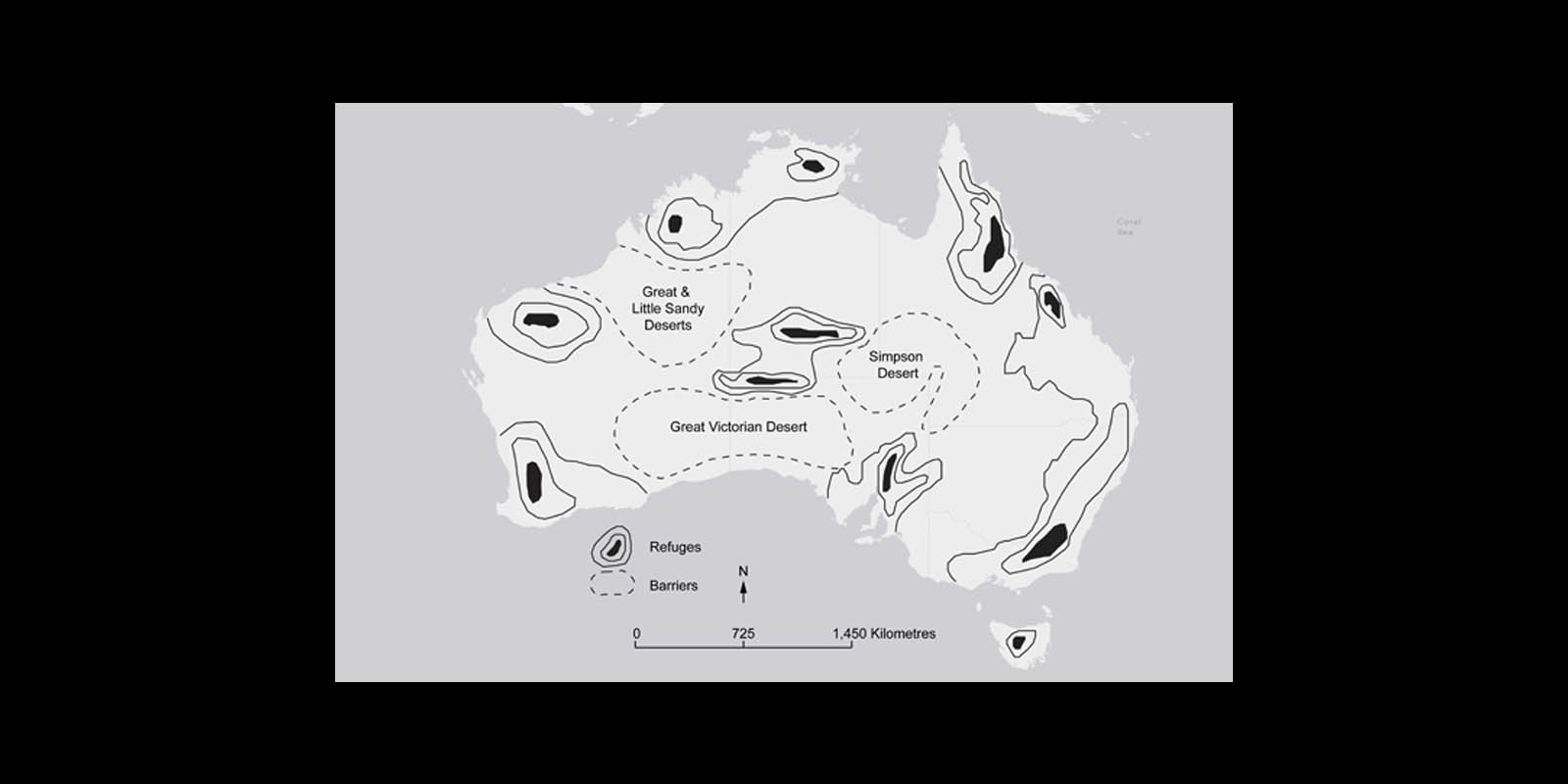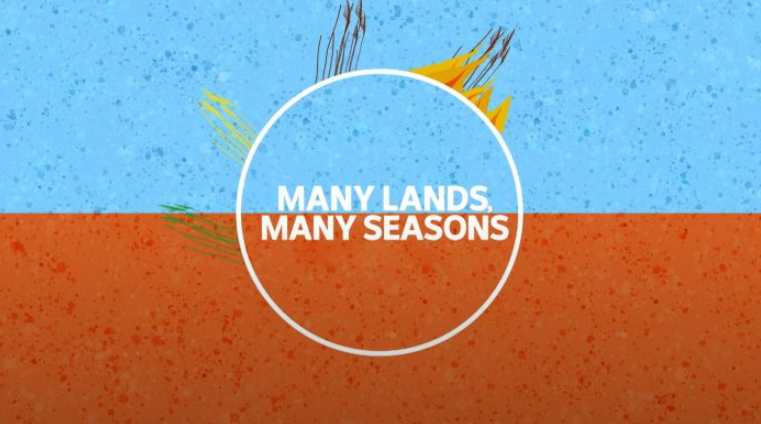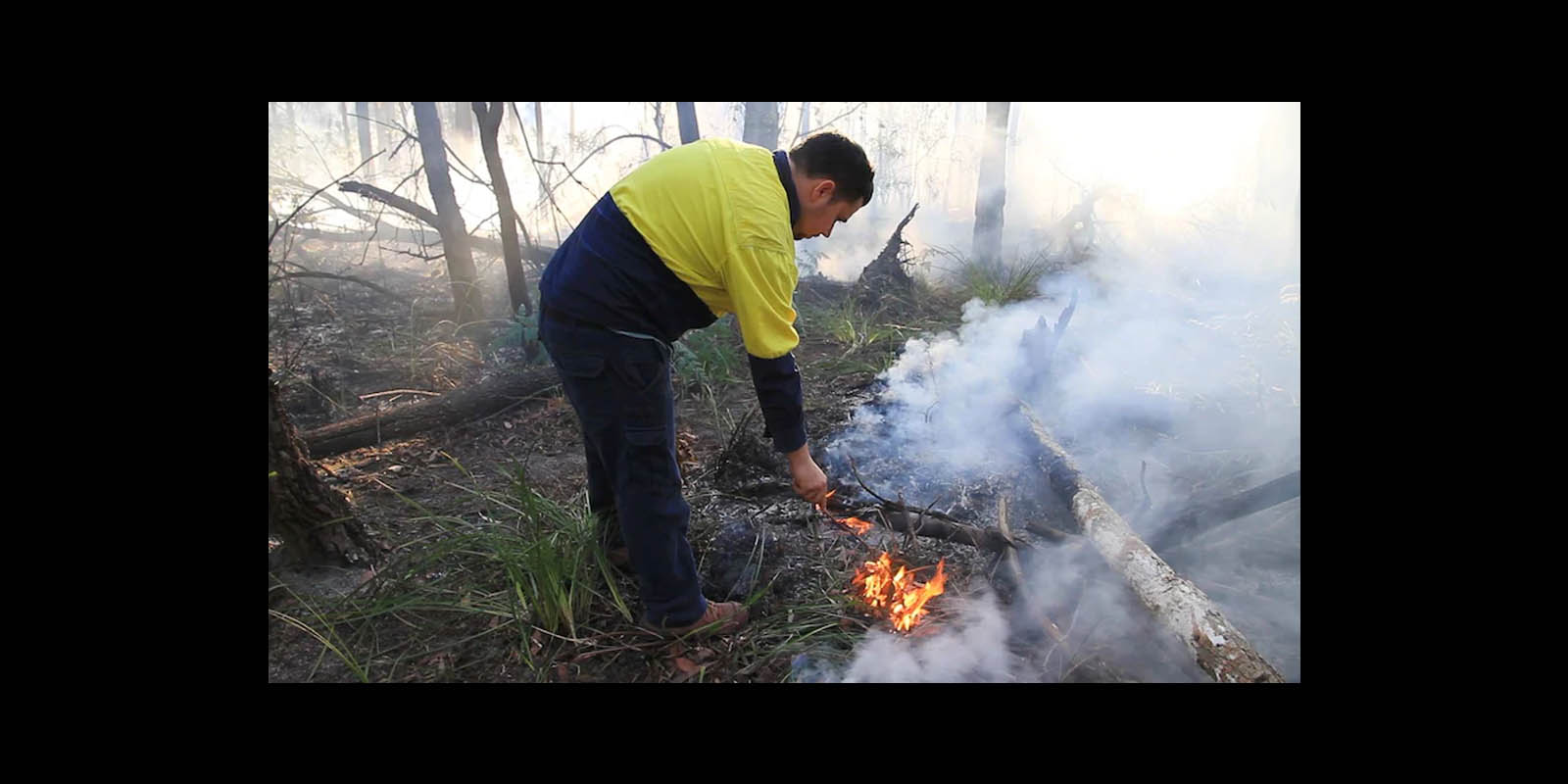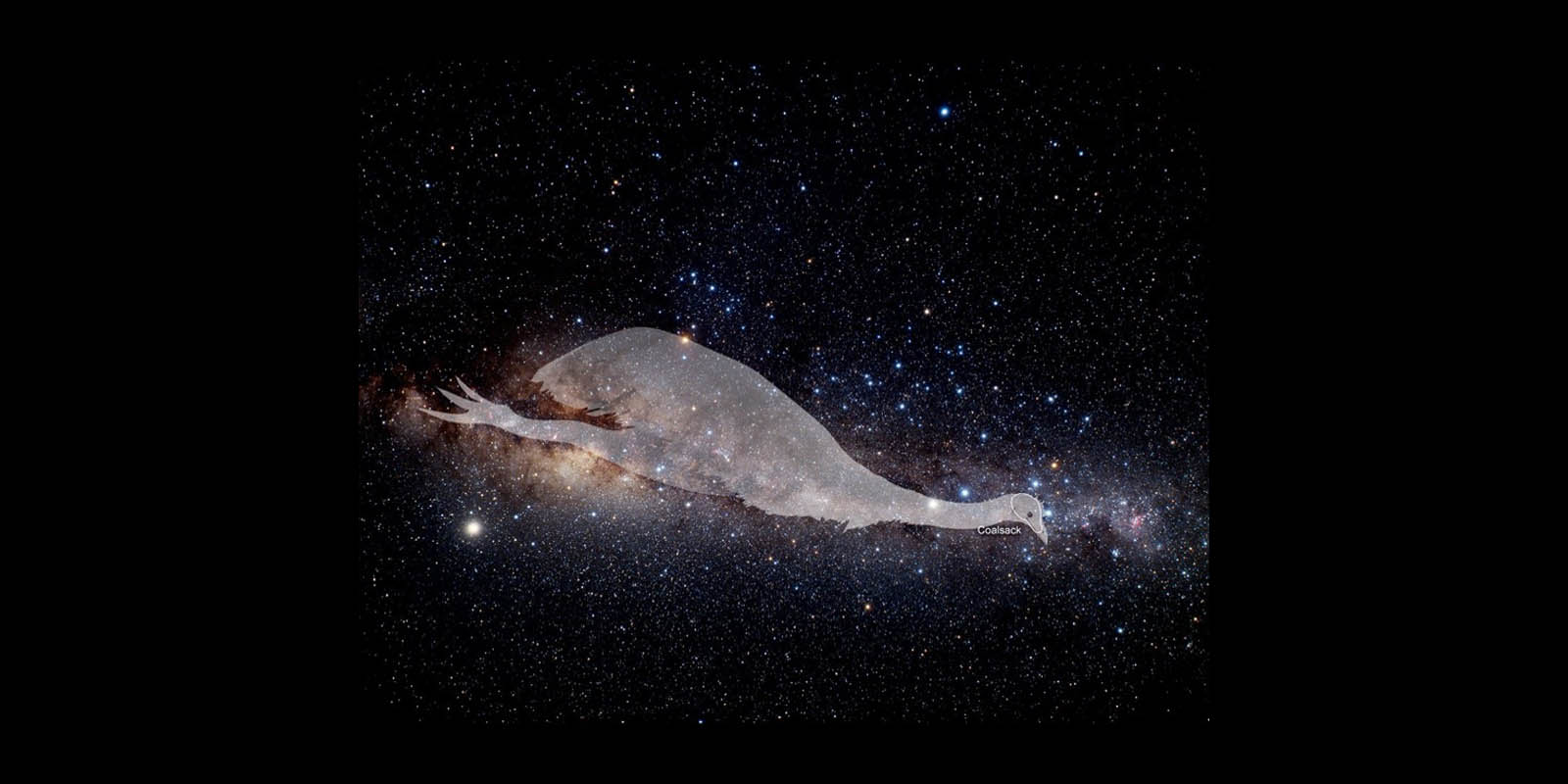Our people have lived on this land since time immemorial. Over thousands of years we have observed and the learnt the ways of our environment and we hold a deep understanding and respect for Country as a result.
This knowledge allowed us to care for Country and ensure our societies were sustainable. While much damage has been done since colonisation, our Mob’s scientific knowledge and understanding holds many of the answers to problems we now face in our environment such as drought and bushfires.
This page covers the knowledge of climate, the ice age, the seasons, cultural burning and astronomy.
Knowledge of Climate
Aboriginal and Torres Strait Islander people are holders of important scientific information about natural events and the climate which go back tens of thousands of years. This includes knowledge about how the lands and waters were formed and changed, including volcanoes, floods, sea levels and more.
Formation of the Bay
The Bay at the centre of Boon Wurrung, Wurundjeri and Wathaurung Country is called Narrm Narrm or Nairm.
It was called Port Phillip Bay by colonisers. Kulin people have a deep knowledge of the Bay developed over many generations, including of its waters, tides, coast and its fish and animals. Western science is slowly starting to catch up with this Kulin knowledge, including about how the Bay was formed.
Boon Wurrung and Wurundjeri people each have stories about a great flood that caused the Bay to form very quickly. Before this flood occurred, the area where the Bay is now was a dry, grassy plain that was a good hunting ground for emu and kangaroo. The Birrarung (Yarra River) flowed across this plain to the sea.
You can read more about the flooding of the Bay in our history timeline!
The Ice Age
During our time on this land we have survived many major changes including the last ice age.
The last ice age began around 20,000 years ago. During this time, the average temperature dropped by 10˚C, rainfall decreased and the wind became cold and dry. It’s been estimated that 80% of the land became uninhabitable forcing mob to migrate to areas with access to large amounts of water such as rivers, which would provide greater chances of survival.
The ice age lasted until around 14,000 years ago when the temperature and sea level began to slowly rise back up toward their original levels. This means that our people survived the beginning of the ice age and continued to live through it for over 5000 years despite the hardships of this period.
There are dreaming stories shared today that talk of a long time ago when it was very cold such as the Bibbulmun people of Western Australia who’s stories of this time begin with 'In the nyitting times..' which means 'In the icy cold times of long, long ago’.
There are also several mobs along the coast of Queensland that have stories describing a time when their ancestors lived on the coast where the Great Barrier Reef now lies. The Yidindji people of the Cairns area talk of a time when Fitzroy Island was connected to the mainland and Green Island was actually four times larger than it is now.
There are similar stories all around the country that show how the coming and going of the ice age affected our people.


This map estimates the areas in which Aboriginal groups congregated during the last Ice Age. (Credit: Peter Veth). Image source: Australian Geographic.
Seasons
Most people know of the four European seasons of, Summer, Autumn, Winter and Spring but did you know that Aboriginal people have our own seasonal calendars?
Each mob has seasons that reflect the unique environment and climate of their Country. Much of our knowledge of the seasons and weather patterns we gained through observation of plants and animals and how they reacted to the environment around them.
For example, rolling coastal clouds indicate to the Yanyuwa people that flying foxes and certain bird species are about to start their seasonal migration, and when the mirrlarr (rain bird) calls out, the Walabunnba people know that there will be a lot of rain.
Knowledge held by Aboriginal people about the seasons includes information about:
- When plants and animals are available to eat
- When animals are breeding
- The movements of stars
- Weather patterns, including heat, cold, wind and rain.
Gariwerd Seasons
Jardwadjali and Djab Wurrung people have 6 seasons for their Country in Gariwerd (the Grampians) in Western Victoria. These are:
- Kooyang (Late Summer) – Season of eels and parched landscape
- Gwangal Moronn (Autumn) – Season of honey bees, sunrises and flocking birds
- Chinnup (Winter) – Season of cockatoos, cool climate and early wildflowers
- Larneuk (Early Spring) – Season of nesting birds and changeable weather
- Petyan (Late Spring) – Season of wildlife and wildflowers
- Ballambar (Early Summer) – Season of butterflies, warm weather and wetland plants.

Image Source: Bureau of Meteorology, Gariwerd calendar.
- WATCH - Many Lands, Many Seasons - ABC Education
This series explores six Aboriginal seasonal calendars to find out how the unique knowledge they contain helps the traditional owners to hunt, fish and collect bush tucker at the best time!

Cultural Burning
For many people, fire is seen as dangerous and scary, but did you know that for Aboriginal people it is an important tool to manage Country?
Cultural burning describes the practices of burning off land as a form of land management. There is no one set practice for cultural burning, each instance is guided by traditional custodians of the land that is being burned to ensure it is suitable for the landscape, the main similarity is that the fire is small, cool and controlled.
Before invasion burning off land was a common practice and was beneficial in many ways. It reduced the risk of wildfires in the hotter months, helped to enrich the soil with nutrients, allowed for new plants to grow and cleared off land so that it could be used by mob and created clear areas of young growth where animals such as kangaroos would come to feed and were therefore easier to hunt.
Our people had a deep knowledge of the land, seasons and weather and would carefully choose which times and areas were best for burning so that it was safe.


Image Source: ABC News, After 160 years, Aboriginal cultural burning returns to Coranderrk Station.
Astronomy
Aboriginal and Torres Strait Islander people are some of the world’s oldest astronomers, holding knowledge about stars, planets, comets and galaxies since time immemorial. Indigenous astronomy contains important information about the universe and its relationship to the Earth’s ecosystems and allows for navigation across land and waters. The stars also represent important stories about Lore and spirituality.
Emu in the Sky
For some Mobs, an important astronomical figure is the Emu in the sky. The dark space between stars in the Milky Way forms the shape of an emu whose position changes as the Earth orbits and rotates.
The position of the emu in the sky tells people when emu eggs will be available to collect. For example, when the emu is lower in the sky and it looks like it is running on the horizon, they know that it is mating season. Later in the year when the emu has moved to directly above them it resembles an egg in an emu nest and this is when mob can go hunting for the emu eggs – they always leave a few behind to ensure that the emu population can be sustained!
Constellations
A constellation is a group of stars that appear to form a pattern or picture. Today the most well-known constellations have been based off of Greek mythology however most cultures around the world have their own versions of what the constellations are.
- The Seven Sisters and The Hunter - When the Wiradjuri people look up at to the sky, they see their creation ancestor Baiame and Mulayndynang (the seven sisters). Baiame’s constellation is almost the exact same as its Greek counterpart Orion and the seven sisters are known today as The Pleiades. The story goes that Baiame is chasing the seven sisters however he tripped and is falling which is why he appears upside down.
Some of the mobs of the Great Victorian Desert named the hunter, Nyeeruna, who, like Orion and Baiame, is chasing the Yugarilya sisters but he is stopped from reaching them by their eldest sister, Kambugudha. - Tagai and His Canoe - In the Torres Strait, Tagai was a great fisherman, who went fishing in his canoe with 12 Zugubals (spirit beings who took on human form when they were on the land).The 12 men drank his water while he was away and, in a rage, Tagai killed them all. He sent them back to the sky, 6 were placed in Usal (the Pleiades) and the other six in Utimal (Orion). Tagai himself is seen standing in a canoe near the Milky Way. His left hand is the ‘Southern Cross’ holding a spear, his right hand is in the constellation known today as ‘Corvus’ and the canoe he stands on is made up by the stars of ‘Scorpius’.
The Sun, Moon and Planets
Aboriginal and Torres Strait Islander people were aware of the Sun, Moon, Mercury, Venus, Mars, Jupiter and Saturn (the visible planets). We watched the movement of these celestial bodies carefully and were able to distinguish the planets from the stars and see as their positions changed in the sky.
Most mobs view the moon as a man and the sun as a woman and they are often seen as a couple. The planets are important ancestral spirits and are usually directly related to the sun and moon. These relationships can be familial, romantic or even as rivals.
For example, the Tiwi people tell of the moon man who follows the path of the sun woman. His four wives (represented by Mars, Mercury, Venus, and Jupiter) follow behind him. To the Boorong people, Chargee Gnowee (Venus), is the sister of the Gnowee (Sun), and the wife of Ginabongbearp (Jupiter). Ginabongbearp is the chief of the old spirits.
The Yolngu people call the moon Ngalindi. He was a fat, lazy man and was punished by his wives who cut bits of him off, he escaped by climbing a tree to but was too injured and died. After 3 days he rose again and continued to grow fat again until 2 weeks later his wives came again to punish him. This cycle continues every month and corresponds with the moon phases.
Mercury
There aren’t many dreaming stories that are currently recorded that involve Mercury (the number is most likely higher however these stories have yet to be recorded), the Wardaman people describe Mercury as a little girl named Gowaman that relates to the actions of the moon man. The Kamilaroi people talk of a ‘star’ that is red and difficult to see, this is believed to be Mercury. This ‘star’ is seen as the red kangaroo and was important for ceremony.
Venus
Venus comes up the most out of any planet dreaming stories as it is extremely bright and due to its positioning, it is commonly linked to the sun and the moon. Venus is often described as the morning and evening star in both modern astronomy and the traditional astronomy of our people.
To the Kamilaroi and Euahlayi people Venus is seen as an old man laughing at a rude joke. These mobs also tell the story of Mullyan the Eaglehawk, who lived in a large yarran tree. He hunted the people nearby the Barwon River and in response a group of young men set him home alight. He then ascended into the sky as Mullyangah, the morning star.
In the Torres Strait, Venus is often given two names. In the Meriam Mir language the morning star is Gerger Nasau and the evening star is Ilwel.
Mars
The Anmatyerre people described Mars as lherrm-penh, meaning “something that has been burnt in flames”. The Kokatha people associate Mars and Antares (a similar looking star) with Kogolongo, the red-tailed black cockatoo.
Jupiter
Mob along the Darling River in New South Wales (most likely the Murrawarri) call Jupiter Wurnda wurnda yarroa, ‘an ancestral man who subsided on roasted yams’ – the colour of the planet represents the fire used to roast the yams. Kamilaroi people see Jupiter as a bad spirit.
Saturn
Stories that involve Saturn are minimal (again the number may be larger than what has presently been recorded). The Kamilaroi and Wailwan people associate the planet with a small bird, wunygal. In the western desert, Saturn, Irukulpinja, and Venus, Iruwanja, were brothers with Jupiter as their dog.


Image Source: IndigenousX, Indigenous astronomy to revitalise the Australian curriculum.
Sources
Knowledge of Climate
- ABC News, Port Phillip Bay once high and dry
- Culture Victoria, Boon Wurrung: The Filling of the Bay – The Time of Chaos
- The Age, 10,000-year bay theory doesn't hold water
The Ice Age
- Bureau of Meteorology, Language, culture and environmental
- Australian geographic, Ice Age struck indigenous Australians hard
- The Conversation, Ancient Aboriginal stories preserve history of a rise in sea level
Seasons
- Bureau of Meteorology, Language, culture and environmental
Cultural Burning
- Firesticks, What is cultural burning?
- ABC News, Indigenous fire practices have been used to quell bushfires for thousands of years, experts say
Astronomy
- TEDxYouth@Sydney, 65,000 yrs - the great history of Australian Aboriginal Astronomy | Kirsten Banks
- Duane W. Hamacher and Kirsten Banks, The Planets in Aboriginal Australia
- The Conversation, Kindred skies: ancient Greeks and Aboriginal Australians saw constellations in common
- The Conversation, A shark in the stars: astronomy and culture in the Torres Strait
- Australian Indigenous Astronomy, The Moon
